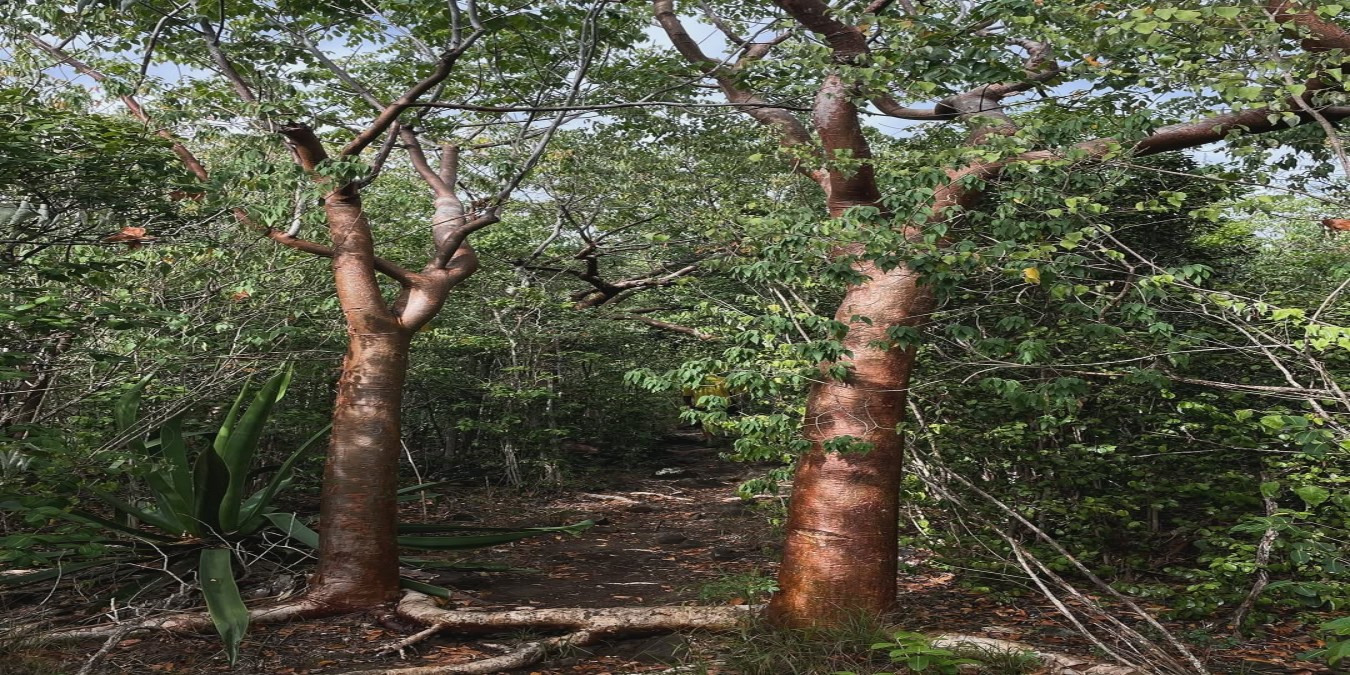The Naked Indian Tree (Bursera simaruba), with its smooth, peeling red bark and graceful green canopy, is one of Tobago’s most eye-catching natural wonders. Locally nicknamed for its sun-burnished trunk that seems to “blush” under the tropical heat, this tree stands proudly along coastal roadsides, village hillsides, and forest edges across the island.
In Tobago, the Naked Indian is more than just a tree; it’s a symbol of resilience and renewal. Its roots hold firm in rocky coastal soil, its branches shelter birds, and its bright red bark catches the golden Caribbean sunlight. Often among the first trees to grow back after storms or land clearing, it represents nature’s quiet power to heal and begin again.
Generations of Tobagonians have admired its beauty and made use of its gifts. It's soft wood once carved into household tools, its fragrant resin burned as natural incense, and its shade cherished by farmers and travellers alike. Birds feast on its tiny red fruits, scattering seeds that bring new life to the land.
Beyond its striking appearance, the Naked Indian reminds us that even in Tobago’s driest, harshest places, life thrives in colour and character. Whether standing tall along the Windward coast or shading a quiet village lane, this tree tells a story of strength, adaptation, and the timeless beauty of Tobago’s natural heritage.


Comments